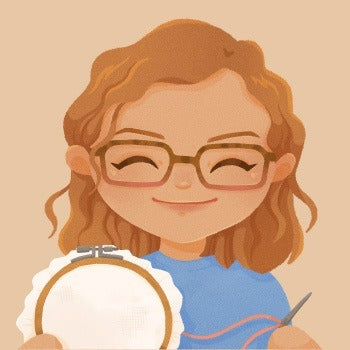Stitch by Stitch: Discovering the Art and Soul Behind Embroidery
Embroidery, often perceived as a simple craft, transcends the boundaries of mere decorative needlework, evolving into a rich tapestry of history, culture, and personal expression. It is a journey that stitches together threads of creativity, patience, and skill, resulting in artworks that are as emotionally engaging as they are beautiful. In this exploration of embroidery's deeper significance, I delve into the intricacies that make this art form a true embodiment of the artist's soul and a medium of mindfulness in our fast-paced world.
The Historical Tapestry of Embroidery
Embroidery's roots are ancient, with every thread holding stories of societal customs and traditions. Unlike many art forms that often cater to the affluent, embroidery has graced fabrics across diverse socioeconomic strata, and many cultures have their unique stitch(es). For instance:
- The intricate Chinese silk embroidery, which dates back to the Shang Dynasty, is rich with symbols and imagery that reflect the nation's history.
- Sashiko from Japan, with its simple running stitch, was originally used for reinforcing clothing but has now evolved into a decorative element.
- The vibrant colors and patterns of Mexican embroidery are infused with the region's warm spirit and indigenous roots.
The craft has not just beautified attire and homeware but also served as a narrative of the times, preserving stories of communities for future generations.
Embroidery as an Artistic Expression
In the hands of a skilled artisan, the humble needle and thread transform into an artist's brush and palette. Just as a painter expresses emotions through strokes on a canvas, an embroiderer uses stitches to convey feelings and messages. The choice of colors, patterns, and textures all interweave to create a visual spectacle that is unique to the creator's vision. Renowned artists like Louise Baldwin have elevated the craft, showcasing that embroidery deserves its rightful place in the world of fine art.
The Meditative Stitch
The rhythmic nature of hand embroidery provides a meditative quality to the practice. The repetitive motion required to create each stitch can lead to a state of mindfulness that is both therapeutic and grounding. Studies have even suggested that engaging in needlework can reduce stress and improve mental health. In a digital era dominated by screens and constant notifications, embroidery offers a welcome respite, a moment of tranquility, and a chance to reconnect with one's inner self.
The Benefits of Mindful Stitching
- It encourages focus and concentration, pulling us away from multitasking and into the present moment.
- Embroidery can become a form of self-expression, allowing the artist to channel emotions through creative output.
- The craft promotes patience and persistence as complex designs demand time and dedication to complete.
Whether one is creating intricate lace patterns or simple cross-stitches, the process itself is as rewarding as the stunning end product.
Conclusion: The Embroidery Legacy
Embroidery stands as a testament to human ingenuity and creativity. It's a bridge between past and present, a therapeutic exercise, and an artistic tradition that continues to evolve. The next time you hold an embroidered piece, remember that it's more than just a finished product; it's a narrative, an artwork, and a meditative journey that has been shared and cherished through countless generations.
Leading image: Photo by Sage Friedman via Unsplash.





